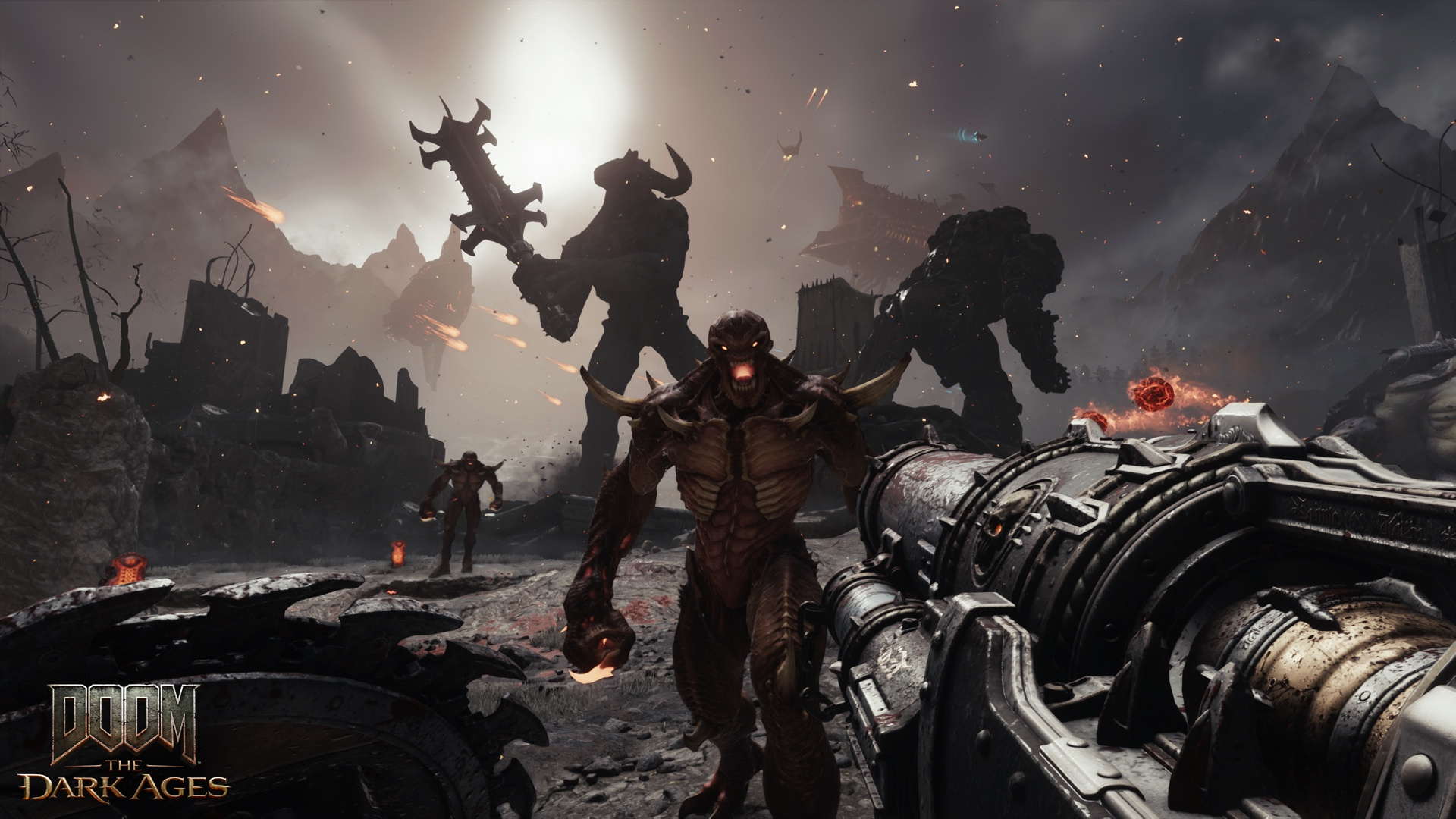When id Software announced DOOM: The Dark Ages, I was both intrigued and apprehensive. Trading the frenetic, acrobatic combat of DOOM Eternal for a grounded, medieval-inspired battleground? It sounded like a gamble. But after plunging into its demon-infested realms, I can confidently say: this still looks and feels like DOOM.
Once more into the pit
If you thought ripping and tearing couldn’t get any grittier, DOOM: The Dark Ages arrives with a bone-crunching, shield-bashing battle cry to prove you wrong. id Software has taken the kinetic chaos of DOOM Eternal, stripped away the fast-paced combat, and replaced it with a brutal, boots-on-the-ground war march through a blood-soaked medieval nightmare. This isn’t about speed anymore, this is about power. You are not a Spartan in hell. You’re a juggernaut in plate armor, and everything in your way is just waiting to be split in half.
If DOOM Eternal made you feel like a hyperactive rabbit with a rocket launcher, The Dark Ages slows you down just enough to make every action hit like a hammer. The emphasis here is on deliberate violence. You no longer jump and fly around demons; you stare them down, parry their claws with a shield made of pure hatred, and split their skulls in half with the new Shield Saw, a weapon that might just be the franchise’s most satisfying toy yet.
The parry system is deceptively simple. Well-timed blocks not only mitigate damage but often stagger enemies, opening them up for some gloriously grotesque glory kills. And those finishers? They’ve been reimagined to match the medieval flair, ripping wings, smashing helmets, and impaling with broken weaponry. It’s gruesome, it’s creative, and it never gets old. At first I thought those kills were removed from the games but by jumping before I killed the demons, it activated those glory kills.
Melee combat now plays a much bigger role. You’re not just relying on guns anymore. The Shield Saw isn’t just defensive; it becomes your go-to in tight spots, especially when ammo’s scarce or you just want to savor the look on a Hell Knight’s face as you decapitate him with a parry-counter combo. You feel less like a Doom Slayer on caffeine and more like a relentless, unstoppable tank that refuses to move until everything else is dead.
Pick your weapon
The weapons in The Dark Ages are both nostalgic and hilariously inventive. The Super Shotgun returns, of course, but it’s been medieval-ified with iron clamps and brutal power. My personal favorite is by far the BFG Crossbow, a medieval homage to one of DOOM’s most infamous weapons, and as the original, it’s extremely satisfying to wield. Think of a magically enhanced super crossbow that fires explosive arrows to take down hordes of enemies all at once. You unlock it deeper into the game, but the fact that it’s there just showcases that The Dark Ages is still the typical DOOM game you wanted to play and the Medieval twist only adds to the flair.
Every weapon has its place and its enemy. Some demons shrug off certain damage types, others demand surgical precision. The combat loop becomes a delicious mix of crowd control, resource management, and improvisational butchery. Upgrades are smartly woven into the lore, too—enhancements come from Sentinel Shrines scattered throughout the map, letting you beef up your weapons, tweak cooldowns, or even give your parries an extra sting. This RPG layer doesn’t really feel at home in this boomer shooter but if you allow some of your time in the upgrade menus, you’ll see that you’ll easily become more and more deadly. Upgrades mean more blood spilled of your enemies, so although it’s not really necessary, it is rewarding to upgrade.
From dragon’s back to gothic catacombs
Let’s talk about the levels. Because holy hell, they’re phenomenal. Each mission is filled with of secrets, puzzles, verticality, and violence. One moment you’re navigating cursed cathedrals lit by blood-red moonlight, the next you’re flying on the back of a biomechanical dragon in a sky battle that would make Daenerys Targaryen jealous. The environments breathe with detail, from the cracked stones of ruined strongholds to the pulsing, fleshy horror of hell’s inner sanctums.
The variety in mission structure also deserves praise. Side objectives, lore-rich arenas, boss fights that demand pattern recognition and quick reflexes, it’s all here. But unlike Eternal, which could sometimes feel like one long arena chain, The Dark Ages slows the pace just enough to let each location breathe. You’ll fight, explore, maybe even get a little lost in the catacombs. And you’ll love it.
And the soundtrack? Finishing Move has done the unthinkable: crafted a score that feels both medieval and metal. Ominous chants merge with industrial riffs and thundering percussion. It’s like Gregorian monks formed a Slayer cover band, and it absolutely slaps.
Conclusion:
DOOM: The Dark Ages is the next big step in the franchise, a step taken in heavy boots on the ground. By slowing down the gameplay, id Software gives weight to every swing, every shot, and every scream. You feel the heft of your armor, the crunch of your enemies’ bones, and the satisfaction of knowing you don’t need to run from hell. Hell runs from you. This game understands what makes DOOM tick but is not afraid to mess with the formula. It’s riskier, grimier, more medieval in tone, and more brutal in execution. It trades agility for authority, and it works beautifully. The addition of parry-based melee, mech battles, and dragons? Icing on the bloody cake.




